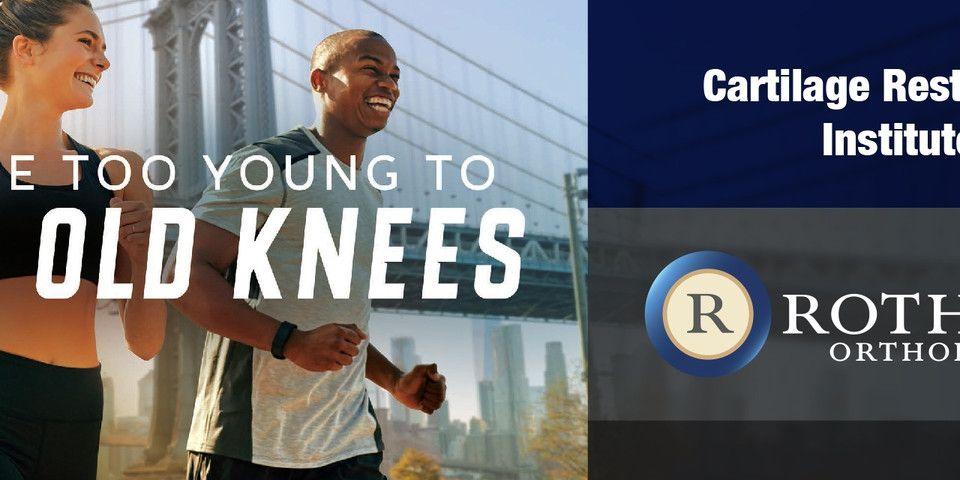Three Grades of Posterior Cruciate Ligament Injury in Trenton
Athletes and non-athletes alike may suffer PCL injuries as the result of a traumatic impact to the back of the knee. The orthopaedic experts at Rothman Orthopaedic Institute can offer superior care for all types of PCL injuries.
While most common among athletes, any traumatic blow to the front of the knee, stretching of the ligament, or misstep can cause a serious injury to the posterior cruciate ligament, or PCL. Among athletes, these injuries may occur from a high-impact fall or a bent knee. Among non-athletes, it may occur as a consequence of an auto accident or a trip.
If you or a loved one have suffered a posterior cruciate ligament injury in Trenton, you'll want to know more about the nature of these injuries. For athletes and non-athletes alike, being well-informed about your injury will enable you to better understand your condition, receive the care you need, prevent further injuries or complications, and prepare for a successful recovery.
Grade One, Grade Two, and Grade Three PCL Injuries
Not every posterior cruciate ligament injury in Trenton is equal. Your overall health, the source and severity of the injury, and the specific factors and conditions of the injury will greatly affect both the seriousness of your symptoms and the appropriate treatment method. In fact, there are three grades of PCL injuries.
The PCL is located on the back of the knee and serves to connect the femur and tibia. An impact to the back of the knee may sprain the PCL, causing a posterior cruciate ligament injury. The grades of sprains are as follows:
-
Grade One
In a Grade One sprain, the PCL will be damaged to a small degree — most likely slightly stretched or slightly pulled. In Grade One injuries, the PCL retains the ability to stabilize the knee joint. -
Grade Two
If the ligament has become loosened as a result of being stretched, the injury is classified as a Grade Two injury, or partial ligament tear. -
Grade Three
Grade Three tears are also classified as complete ligament tears. In Grade Three PCL injuries, the ligament is split in two, severely destabilizing the knee joint.
The most common types of PCL injuries are Grade One and Two — small sprains and partial tears. An examination by your doctor or specialist will determine which grade your posterior cruciate ligament injury in Trenton belongs to and what treatment methods will be advised to properly address and correct your injury.
The Spectrum of PCL Treatments
Following your examination and medical diagnosis, your doctor will be able to determine the best course of treatment for your particular case. Most Grade One and Grade Two PCL injuries will be able to be effectively treated with non-surgical treatments, such as:
-
Physical therapy (including exercises to restore knee function and strengthen the leg and thigh muscles)
-
Rest, icing, compression, and elevation
-
Immobilization (including bracing and the use of crutches)
For Grade Three injuries, a surgical solution may be recommended by your doctor. The majority of surgical procedures pursued for PCL injury patients involve arthroscopic procedures using small incisions. Surgery will allow the injured ligament to be carefully rebuilt (typically using a tissue graft).
No matter the type of posterior cruciate ligament injury in Trenton you’ve experienced or the severity of your injury, the Trenton Orthopaedic Group at Rothman Orthopaedic Institute knee specialists can offer you the best care available. They will ensure that you receive the most effective and ideally-suited treatment options for your particular condition.
To learn more or schedule an examination, visit us here or contact us at 1-800-321-9999.
Related Physicians
Locations
Related Specialties
Related Conditions
Related Treatments
Related Programs
-

Cartilage Restoration Institute
This is a center where patients can go to have their disabled joint biological resurfaced, realigned, and stabilized without having the joint replaced by artificial materials such as metal and plastic. It is well known that the outcomes of patients under the age of 50 undergoing artificial joint replacement are not as good as we would like. Therefore we feel the future of Orthopaedics is to try to restore a joint back to its original anatomy by realignment, ligament reconstruction, and cartilage restoration.Read More




